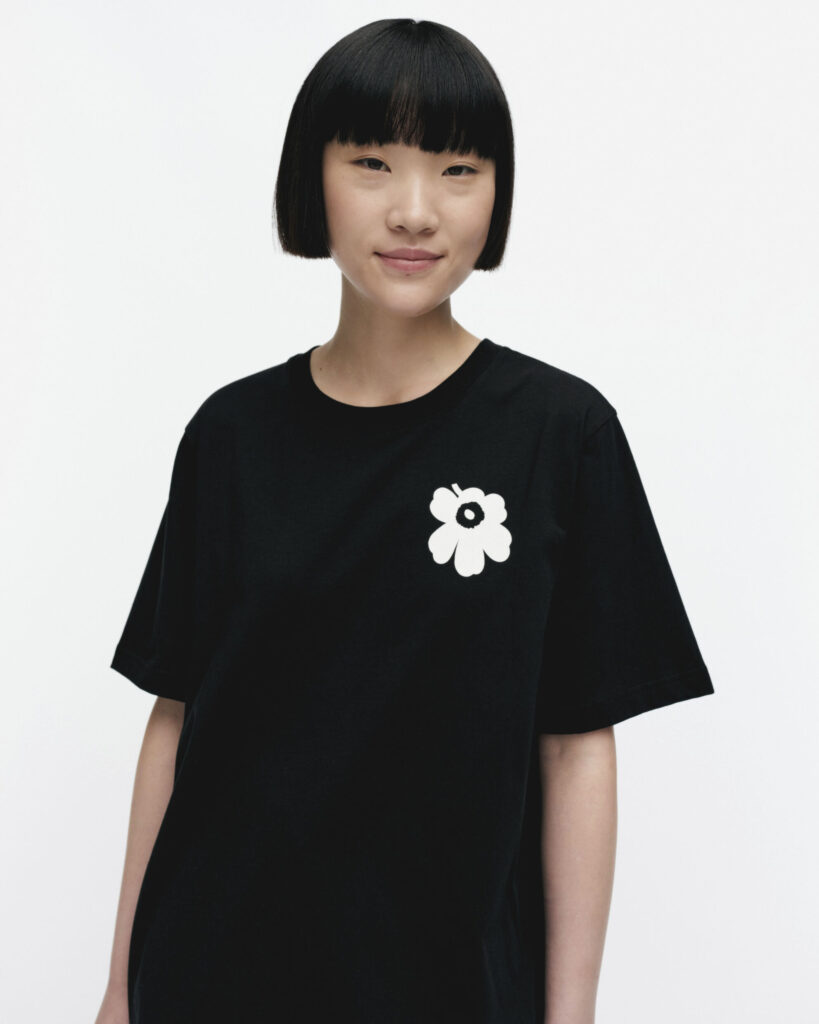Marimekko’s own printing factory in Helsinki provides us unique possibilities to participate in various development projects. In 2022, we started with Rester a collaboration, where the cutting waste and other leftover materials generated in the Marimekko’s printing factory will be recycled into new textile fibers. Rester is a Finnish company that enables the recovery of business textiles into new fiber and high-quality raw materials. Business textiles are, e.g., end-of-life workwear, hotel and hospital textiles, or like in Marimekko’s case, side streams of textile production.
At Marimekko, we have set ambitious sustainability targets for our own operations and, for example, to textile materials we use. Material choices play an important role in our aim to reduce our environmental impact and improve transparency in our value chain, among others. According to our material strategy, we are, e.g., reducing our use of conventional materials and shifting to alternatives that are less-emission intensive and use less water, chemicals, and fossil resources.
In December, we are thrilled to present the first products from this collaboration with Rester: t-shirts made partly from textiles recovered directly from Marimekko’s leftover fabric and cutting waste at our textile printing factory and sewing shop. The main material of the Embla T-shirt, part of our pre-spring ’24 collection, contains at least 25% recycled cotton-linen fibers regenerated from production waste. In addition, the product contains 75% organic cotton. These pieces showcase our latest steps towards one of our goals: to continuously reduce the amount of waste Marimekko generates and contribute to the circular economy through new processes and services.
Why it’s important to keep the fibers circulating?
By using 1,000 kg of recovered cotton fiber, Marimekko can save, on average, 1,5 million liters of water and reduce greenhouse gas emissions by 2,000 kg compared to using virgin material. In other words, not only does this recycling process lead waste away from landfills and incinerators, but also helps to conserve existing natural resources by reducing the need for growing and processing new raw materials.
We are proud that almost 100% of the waste generated at our factory and headquarters is repurposed for energy production or as recycled material for various uses. However, it is not only about repurposing but also putting effort into reducing waste at all points in the process. We are, for example, continually adjusting our design process to further increase our products’ longevity and reduce the amount of pre-consumer fabric scraps and yarn waste. Every small step counts.
